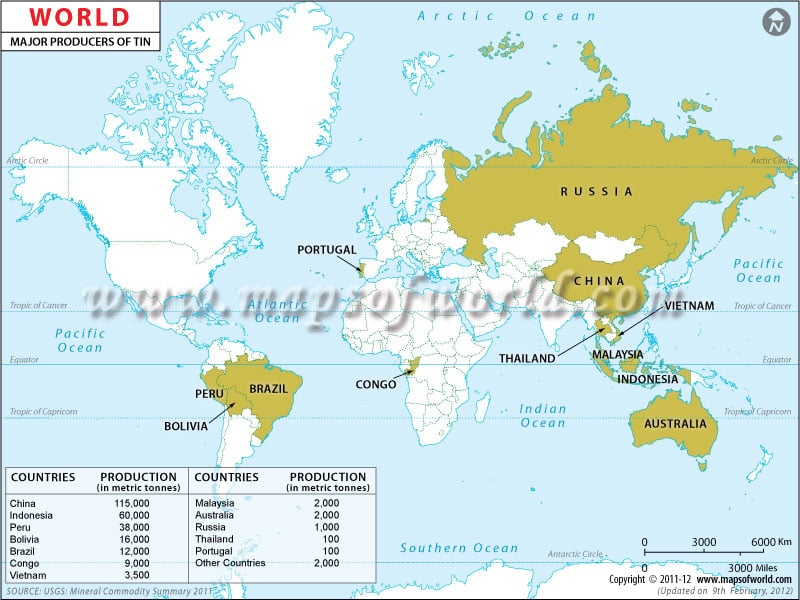Tin is a crystalline silvery, malleable metal obtained from the mineral cassiterite which is tin oxide (SnO2). It is extracted from various other ores that occur in the form of complex sulfides such as stannite, cylindrite, franckeite, canfieldite, and teallite.
One of the most remarkable properties of tin is that it alloys or mixes with the majority of other metals very easily. This property combined with its low melting point makes tin an essential ingredient of most solders.
As it is not toxic and does not corrode that easily, it is used as a protection for steel for food and drinks ‘tin cans’.
The World Map of Tin Producing Countries shows the list of the countries that produce large quantities of tin.
As shown in the map, China is the largest producer of tin in the world. In 2010, it produced over 115,000 metric tonnes of iron. The main producing area is the Gejiu complex in Yunnan which accounts for a large proportion of the total output in China.
The second place is occupied by Indonesia followed by Peru, Bolivia, Brazil, Congo, Vietnam, Malaysia, Australia, Russia, Thailand, and Portugal. It is an important commodity in international trade and is used in hundreds of industrial processes throughout the world.
Major Tin Producers of the World-2010
| Country | Production in Metric Tonnes |
| China | 115,000 |
| Indonesia | 60,000 |
| Peru | 38,000 |
| Bolivia | 16,000 |
| Brazil | 12,000 |
| Congo | 9,000 |
| Vietnam | 3,500 |
| Malaysia | 2,000 |
| Australia | 2,000 |
| Russia | 1,000 |
| Thailand | 100 |
| Portugal | 100 |
| Other Countries | 2,000 |
